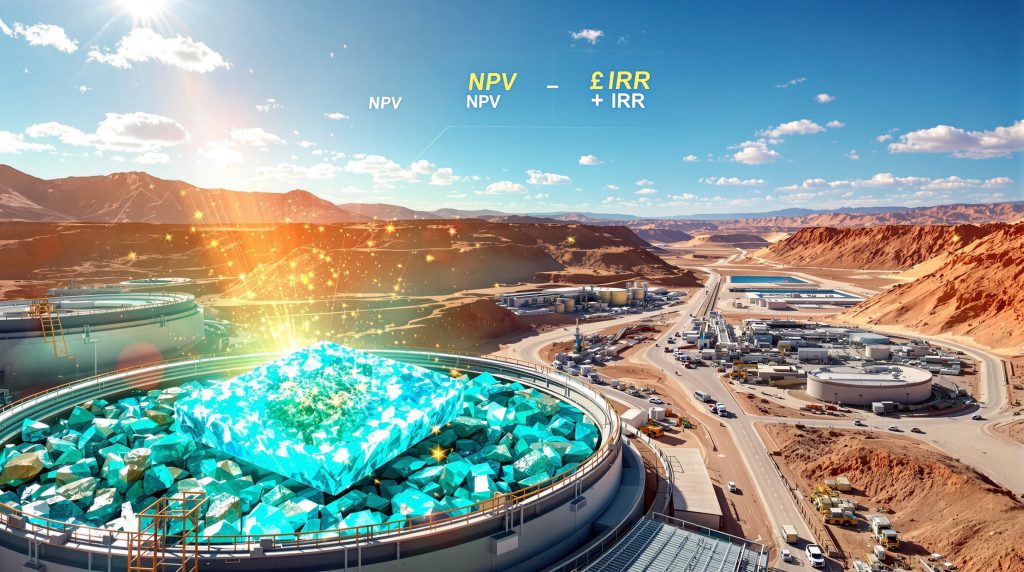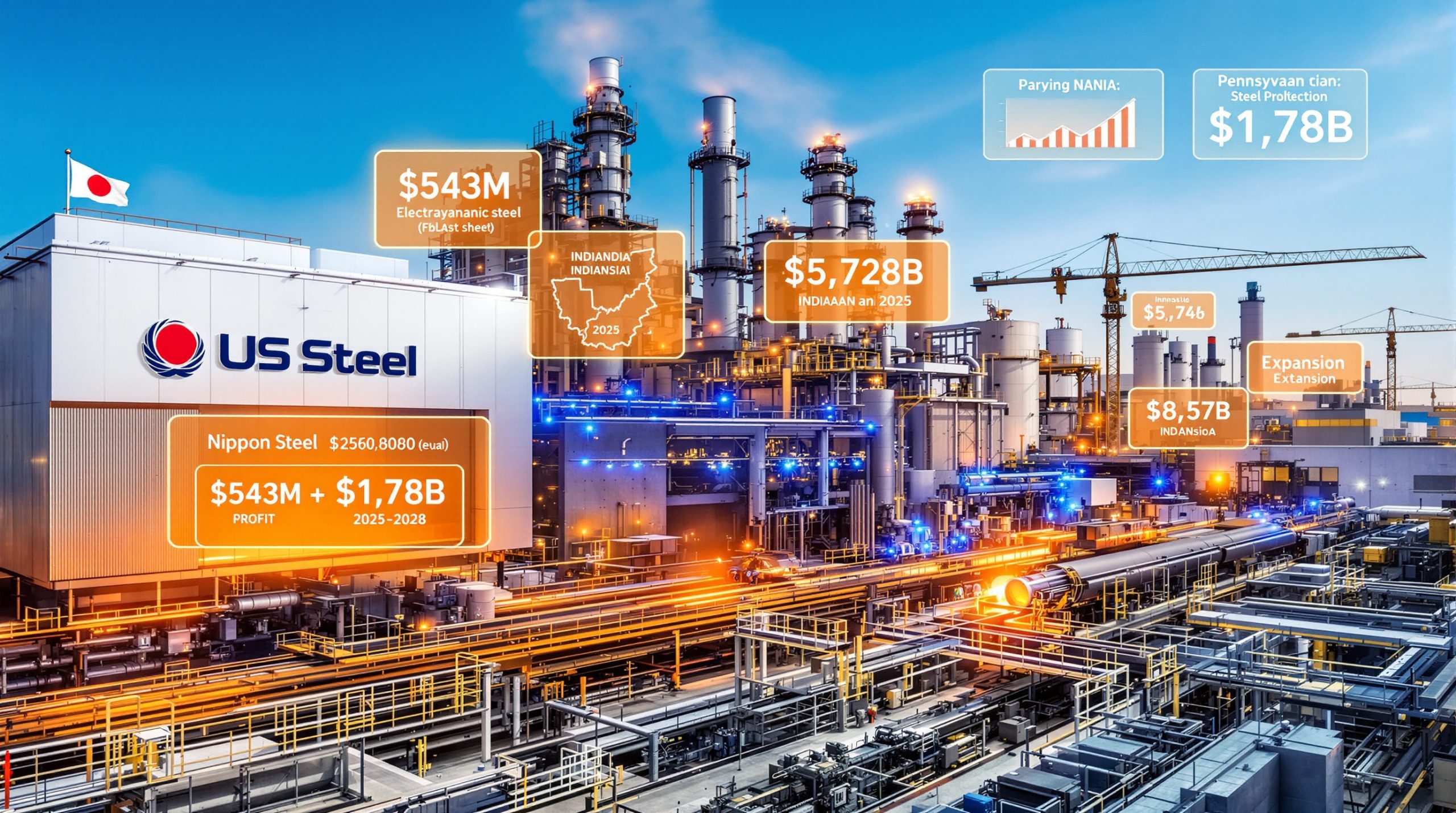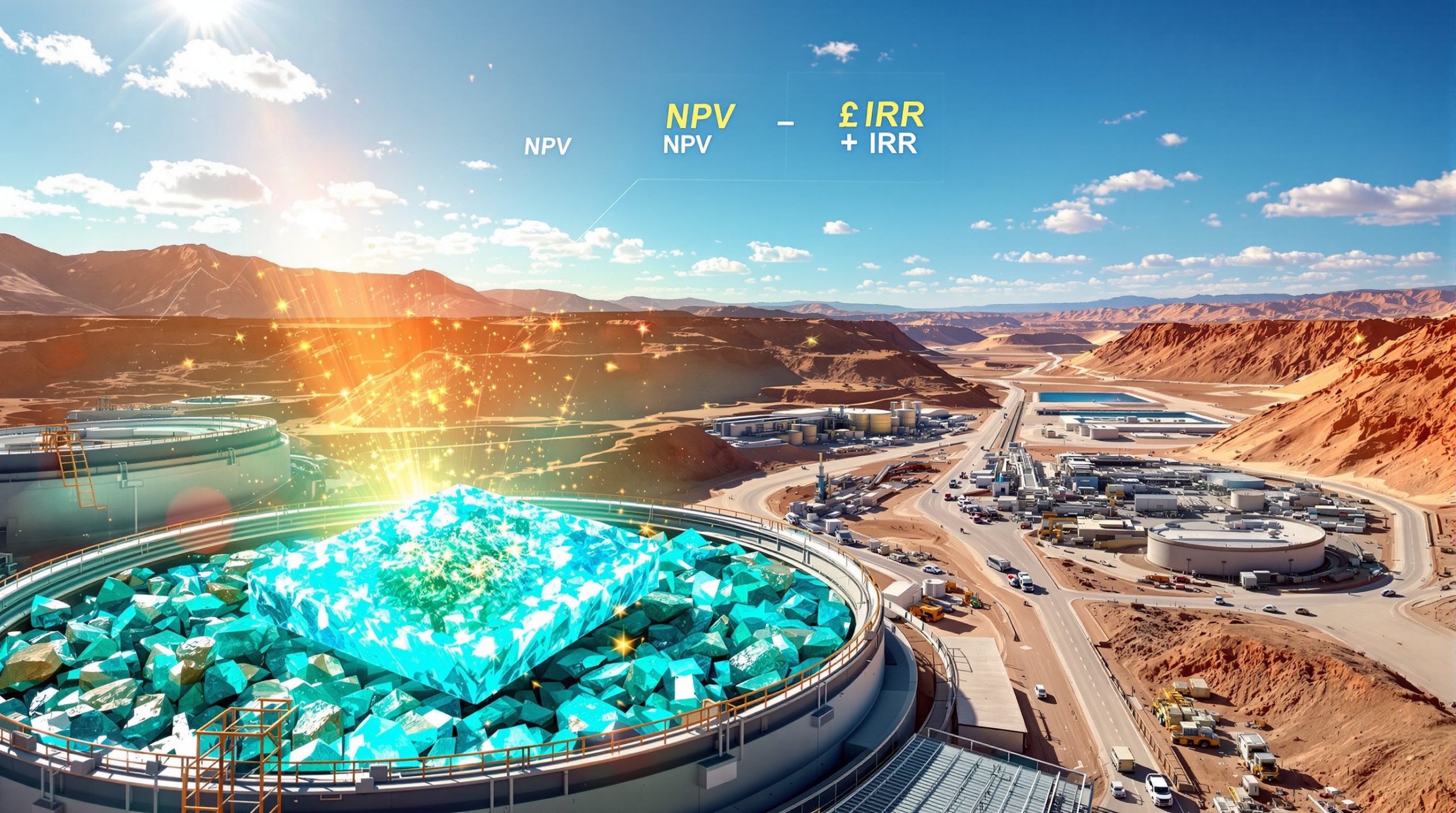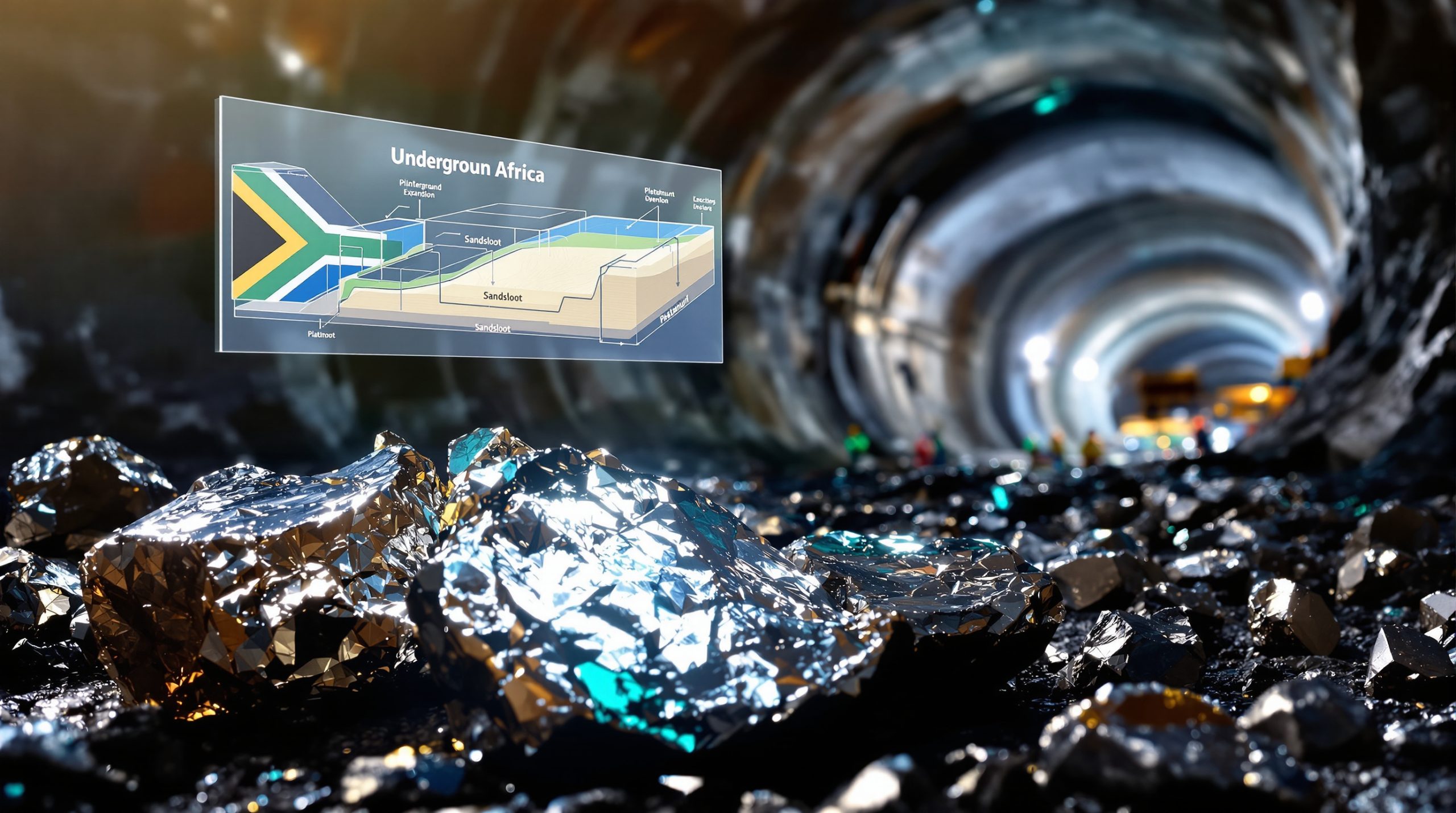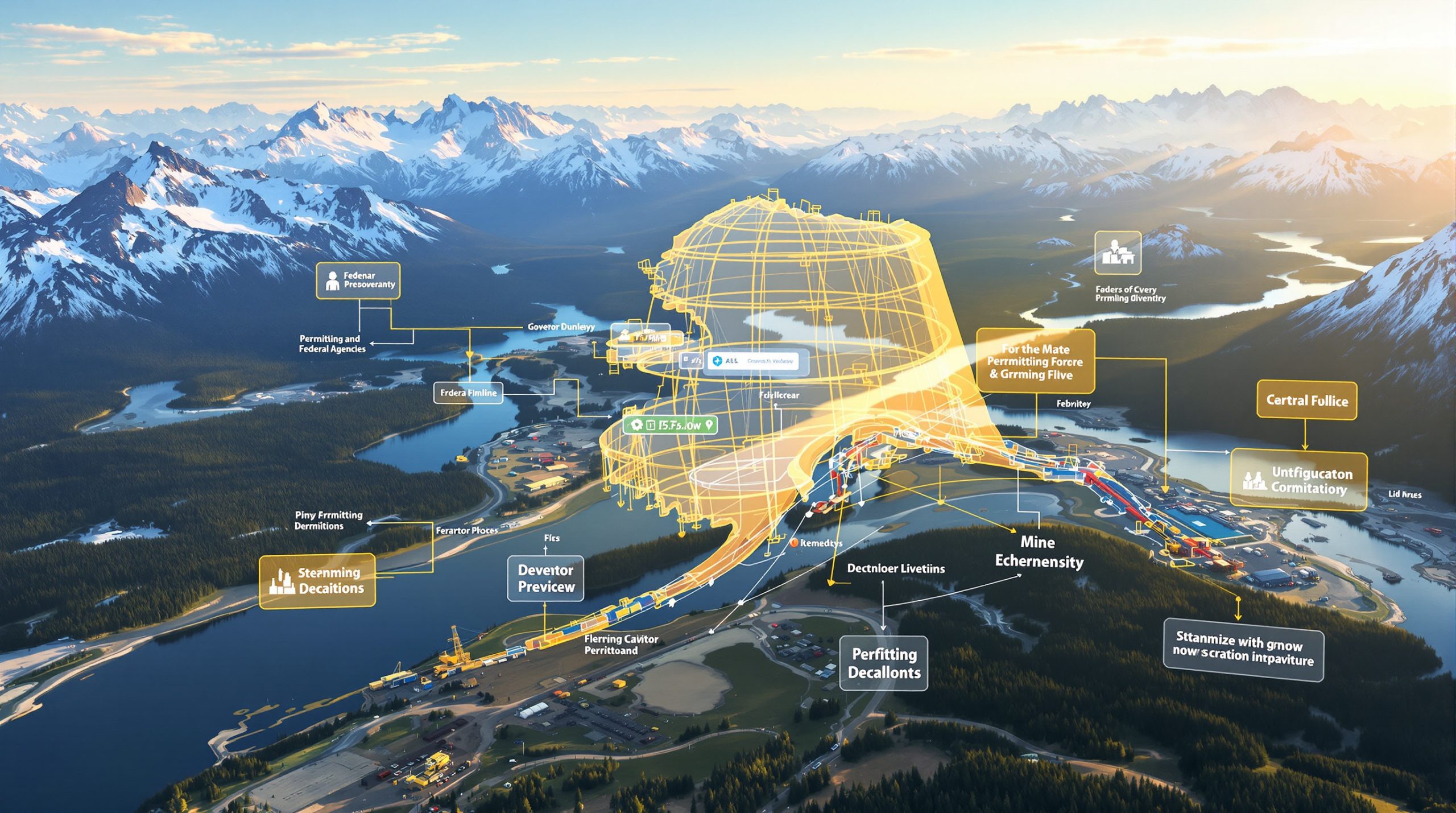Understanding Marimaca Copper's Definitive Feasibility Study: Economics, Timeline, and Growth Potential
The Marimaca Copper Definitive Feasibility Study (DFS) represents a pivotal milestone for one of Chile's most promising copper development projects. As global copper demand accelerates due to electrification trends and renewable energy adoption, this comprehensive technical and economic validation positions the project to become a significant mid-tier copper producer in a market facing structural supply deficits.
Key Economic Highlights of the Marimaca DFS
Capital Requirements and Production Profile
The DFS outlines a copper cathode production operation with several competitive advantages:
- Initial capital expenditure of US$587 million
- Highly competitive capital intensity of US$11,700 per tonne of annual production capacity
- Production target of 50,000 tonnes per annum (tpa) of copper cathode
- 13-year mine life based on current reserves
- Exceptionally low life-of-mine strip ratio of 0.8:1
This capital intensity ranks Marimaca among the most efficient copper development projects globally, particularly when compared to operations targeting production above 50,000 tpa.
Financial Returns and Copper Price Sensitivity
The project demonstrates robust economics across multiple pricing scenarios:
| Copper Price Scenario | Post-Tax NPV8 | Post-Tax IRR | Payback Period |
|---|---|---|---|
| Base Case (US$4.30/lb) | US$709 million | 31% | 2.5 years |
| Current Market (US$5.05/lb) | US$1.07 billion | 39% | 2.1 years |
| Peer Study Price (US$4.80/lb) | US$1 billion | 36.5% | 2.3 years |
The base case economics utilize a conservative long-term copper price prediction of US$4.30/lb, which sits below current consensus long-term pricing forecasts of approximately US$4.50-4.70/lb. This conservative approach provides investors with a defensive margin against potential market fluctuations.
Operating Cost Structure
The project boasts a competitive cost profile that places it in the second quartile of global copper projects:
| Period | C1 Cash Costs | All-in Sustaining Costs |
|---|---|---|
| First 5 Years | US$1.45/lb | US$1.97/lb |
| Steady State (Years 2-10) | US$1.68/lb | US$2.09/lb |
| Life of Mine | US$1.84/lb | US$2.29/lb |
These cost metrics benefit from the project's exceptionally low strip ratio and favorable geometry, which limits vertical haulage distances to less than 200 meters even at the end of the current mine plan. This geometry provides significant operational advantages compared to many deeper porphyry copper operations.
How Does the Processing Approach Maximize Copper Recovery?
The DFS outlines a conventional yet optimized processing route designed to maximize metal recovery while minimizing operational complexity:
- Three-stage crushing and agglomeration with modern control systems
- Dynamic heap leaching with variable parameters based on detailed mineral sub-domains
- Solvent extraction and electrowinning (SX-EW) to produce Grade A LME copper cathode
This approach yields impressive recovery rates:
- Average life-of-mine copper recovery of 72%
- Enhanced recovery of 78% during the first five years of operation
- Production of premium-grade copper cathode requiring no further refining
The processing design incorporates findings from seven comprehensive phases of metallurgical testwork, providing high confidence in recovery projections across different ore types. This extensive testing included column leach tests, bottle roll testing, and mineralogical analyses to optimize leach parameters for each ore domain.
What Resource Base Supports the Project?
The DFS is underpinned by a substantial resource:
- Maiden Proven and Probable Mineral Reserves of 178.6 million tonnes at 0.42% total copper
- Total contained copper metal of 750,000 tonnes within reserves
- Reserve conversion ratio of approximately 84% from Measured and Indicated resources
- Exclusion of 21 million tonnes of Inferred resources (0.29% total copper) from the current mine plan
The resource estimation incorporates data from approximately 140 kilometers of drilling completed between 2016 and 2022, with comprehensive sequential copper analysis and detailed mineralogical studies. The high reserve conversion ratio demonstrates the quality and continuity of the deposit.
What Growth Opportunities Exist Beyond the Base Case?
The company has identified multiple avenues for production expansion and mine life extension:
-
Conversion of Inferred Resources: Approximately 10 million tonnes of inferred material currently classified as waste could be converted to reserves with minimal additional drilling. This represents a near-term opportunity to enhance project economics.
-
Nearby Oxide Deposits: The Pampa Medina and Madrugador oxide deposits, located within the company's land package, present opportunities for satellite operations to supplement the main Marimaca Oxide Deposit.
-
Sulphide Potential: Recent drilling has demonstrated significant sulphide mineralization beneath the MOD, which has never been systematically explored. Preliminary metallurgical work suggests conventional flotation processing could be viable for these deeper resources.
-
Infrastructure Scalability: The initial design incorporates oversized key equipment and infrastructure to facilitate cost-effective future expansions, including:
- Primary crusher rated for higher throughput
- Overspecified conveyor systems
- Water pipeline with expansion capacity
- Power connections with additional capacity
- Heap leach pads with expansion footprints
The company targets increasing potential production capacity to over 70,000 tpa of copper cathode within five years through development of these additional opportunities, representing a 40% increase from the base case production profile.
What Is the Project Timeline and Permitting Status?
Environmental permitting is progressing according to Chile's established regulatory framework:
- The company has submitted comprehensive responses to the first ICSARA (list of questions and clarifications) from regulatory authorities
- Management anticipates one additional round of follow-up questions
- Environmental approvals are targeted for the end of 2025
- Construction commencement is planned for 2026
- Following environmental approval, Sectoral Permits will be required for construction and operations
The permitting timeline aligns with the company's financing and development strategy, with major construction activities scheduled to begin after receiving full environmental approval. This approach minimizes regulatory risk and optimizes the deployment of copper production capital.
How Is Marimaca Approaching Project Financing?
Debt financing workstreams are advancing with several key components:
- Financial advisors and technical experts engaged to structure financing packages
- Multiple potential funding sources being evaluated, including traditional project finance, strategic investments, and equipment financing
- Objective to identify preferred financing partners by year-end 2025
- Alignment with the environmental approval timeline to optimize capital deployment
The DFS incorporates purpose-built water infrastructure to mitigate risks associated with existing regional mine water infrastructure. Water and power infrastructure costs are structured on a Build-Own-Operate-Transfer basis, reducing upfront capital requirements while reflecting ongoing operating costs.
This financing approach optimizes the company's capital structure while ensuring operational reliability through dedicated infrastructure. The BOOT arrangement for water and power infrastructure represents an increasingly common approach in the Chilean mining sector to balance capital efficiency with operational security.
What Technical Considerations Impact Project Risk?
The project benefits from relatively low technical risk due to several favorable characteristics:
- Straightforward open-pit mining approach with conventional equipment
- Conventional processing methods with proven technology in similar operations
- Extensive metallurgical testing across seven phases with consistent results
- Simple mining geometry and low strip ratio reducing operational complexity
- Operating costs developed from first principles with detailed equipment quotes
- Equipment provider maintenance schedules incorporated over the full mine life
The DFS mine plan does not consider selective mining of mineralogical domains, though natural selectivity occurs based on deposit geometry. Early production years will focus on green oxides (brochantite and chrysocolla), transitioning to enriched secondary sulphides and WAD material in later years. This natural sequencing enhances early-year economics without requiring complex selective mining techniques.
Why Is This Project Significant for Copper Investors?
Marimaca Copper's DFS presents a compelling investment proposition in the copper development space, combining:
-
Defensive Economics: Low capital intensity, competitive operating costs, and robust financial returns provide resilience across various copper price environments. The project maintains positive economics even at significantly lower copper prices than current market levels.
-
Growth Potential: The 13-year reserve life, supported by significant untapped resources and identified growth opportunities, offers clear pathways for production expansion and mine life extension. The company's exploration success rate suggests further resource growth is likely.
-
Development Readiness: With environmental approvals targeted for end-2025 and debt financing discussions advancing, the project is well-positioned for development execution within a timeframe that aligns with projected copper market deficits.
-
Strategic Location: Situated in Chile's established mining jurisdiction with proximity to infrastructure, skilled labor, and export facilities. The project benefits from Chile's century-long copper mining tradition and supportive regulatory framework.
-
Market Timing: Positioned to enter production during a period of projected copper supply deficits and strong demand growth driven by electrification and renewable energy transitions. Industry analysts project a potential copper deficit of 5-8 million tonnes by 2030.
What Are the Next Steps for Marimaca Copper?
The company's near-term focus includes several parallel workstreams:
- Completing the environmental permitting process through continued engagement with regulatory authorities
- Advancing debt financing discussions with potential lending partners
- Progressing the Preliminary Economic Assessment for the Pampa Medina deposit
- Continuing exploration of sulphide potential beneath the main oxide deposit
- Finalizing detailed engineering and construction planning
- Engaging with potential strategic partners for project development
This multi-faceted approach aims to optimize project economics while advancing toward construction readiness by late 2025 or early 2026.
The Broader Context: Copper Market Dynamics
The Marimaca project is being developed against a backdrop of significant structural changes in the global copper market:
Supply Constraints
Global copper mine production faces multiple challenges:
- Declining ore grades at existing operations, with average grades falling from 1.2% to below 0.5% over the past three decades
- Limited new discoveries despite increased exploration spending
- Longer permitting and development timelines for new projects
- Water constraints in key copper-producing regions
- Resource nationalism and increasing taxation in some jurisdictions
These factors have contributed to a limited pipeline of new copper projects, particularly those with production capacities above 50,000 tpa. This situation is reflected in the latest global copper supply forecast showing concerning trends.
Demand Growth Drivers
Simultaneously, surging copper demand is accelerating due to several transformative trends:
- Electrification of transportation (EVs require 2.5-4x more copper than conventional vehicles)
- Renewable energy infrastructure (solar and wind require 4-5x more copper than conventional power)
- Grid modernization and energy storage systems
- Industrial automation and digitalization
- Urban infrastructure development in emerging economies
Industry analysts project copper demand could grow by 3-4% annually through 2035, potentially creating a supply gap of 5-8 million tonnes annually by the end of this decade.
Strategic Importance
Copper's role as a critical material for the energy transition has elevated its strategic importance:
- Countries are developing critical mineral strategies that include copper
- Manufacturing companies are seeking to secure long-term supply
- Investment in copper assets is increasingly viewed through a strategic lens
This strategic dimension adds another layer of value to development-ready copper projects with robust economics and expansion potential.
Conclusion: A Robust Foundation for Copper Development
The Marimaca Copper Definitive Feasibility Study establishes a solid technical and economic foundation for development of a significant new copper project. With its combination of low capital intensity, competitive operating costs, and substantial growth potential, the project represents one of the more attractive copper investment strategies in the current market.
The project's simple technical characteristics, favorable location, and experienced management team provide confidence in successful execution, while the identified growth pipeline offers potential for value creation beyond the base case development scenario.
As global copper demand continues to grow, driven by electrification and renewable energy transitions, well-structured projects like Marimaca's MOD will play an increasingly important role in addressing projected supply deficits.
Disclaimer: This article contains forward-looking statements regarding project development timelines, production targets, and market projections. Actual results may differ materially from these projections due to various factors including permitting delays, technical challenges, market conditions, and commodity price fluctuations. Investors should conduct their own due diligence before making investment decisions.
Ready to Capitalise on the Next Major Copper Discovery?
Track breaking mineral discoveries in real-time with Discovery Alert's proprietary Discovery IQ model, which turns complex ASX announcements into actionable investment insights. Explore our dedicated discoveries page to see how early identification of projects like Marimaca could position you ahead of the market.
